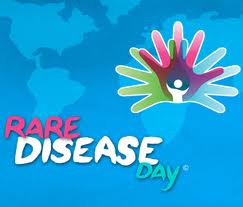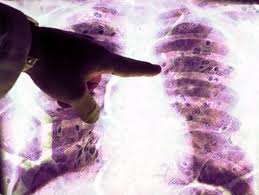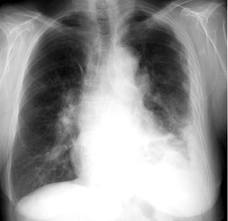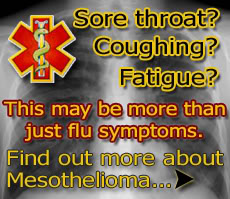It has been more than 32 years since Denmark began in 1972 a ban on the use of asbestos insulation. In the late 1980s, Denmark also extended its ban to include other products containing asbestos. And now, Denmark is one of 55 countries who have completely banned asbestos products.
But according to the new study of mesothelioma in Denmark, a steady rise in cases of this asbestos-linked cancer that began in the 1950s is still going on.
Mesothelioma and Asbestos
Mesothelioma is an aggressive cancer of the membranes around internal organs, most often the lungs or abdomen of the patient. It is a deadly disease that comes from exposure to the mineral asbestos.
Asbestos was made into a popular insulator and component in building materials worldwide back in the 1930s because it was readily available, cost little, and its very resistant to fire and corrosion. The use of Asbestos in the building materials has put hundreds of thousands of workers at risk for mesothelioma.
Many countries, including Denmark, began in the 1950s and 60s to reduce their use of Asbestos products after it was linked to mesothelioma cancer as well as other unhealthy conditions.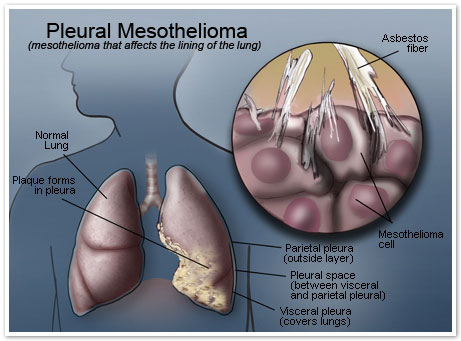
In a Danish study, the research team used data from the years 1943 through 2009 about mesothelioma stored at the Danish Cancer Registry. The researchers discovered the total incidence of mesothelioma continued to rise throughout the study period showing a peak of 1.76 cases per 100,000 people during the years 2008-2009.
The study also identified more cases in the Region of Northern Jutland in comparison to Southern Denmark. While mesothelioma survival rate has improved slightly, the researchers noted that the prognosis for getting mesothelioma continues to remain poor based on a median rate of 12.5 months survival for men and 13.3 months survival for women in the years 2008 through 2009.
In the Danish Medical Journal, the authors conclude:
“The national malignant mesothelioma incidence for men continues to increase, perhaps showing a slight tendency towards deceleration in the most recent decade,”
But they go on to say that:
“A clear long-term effect of the Danish asbestos ban has not yet occurred.”
Lag Time between Asbestos Exposure and Mesothelioma Diagnosis
With mesothelioma, the lag time (latency period) between exposure to asbestos and the development of the disease can be many decades. It is during the latency period that the disease is very difficult to detect and diagnose, much less tracing its source. Frequently mesothelioma cancer is diagnosed late in its development, and it tends to progress quickly. Estimates from the World Health Organization show that since 1994, more than 92,000 people have died from mesothelioma cancer.
RESULTS:
In Denmark, the national incidence of malignant mesothelioma cancer for men has been rising during the study period, reaching its total maximum of 1.76 in 2008-2009. The incidence rate has remained relatively steady for women with a maximum of 0.5 in 1973 through 1977.
Northern Jutland and the surrounding region records the highest male incidence rate of mesothelioma since the late 1980s. The difference in relative risk for men in the Region of Southern Denmark and the Region of Northern Jutland was 1.53 during the period of 2008-2009. The relative risk of developing mesothelioma cancer in the Region of Northern Jutland for the entire study period when collectively compared to the whole of Denmark was 1.38. The study showed there are no notable regional differences for women at risk of developing mesothelioma. Therefore, survival has slightly improved for both genders, but still remains poor with a median survival of 12.5 months for men and 13.3 months for women in the period of 2008 through 2009.
CONCLUSION:
Within Denmark the national malignant mesothelioma incidence for men continues to increase, perhaps showing a slight tendency towards deceleration in the most recent decade. A measurable long-term mitigating effect of the Danish ban on asbestos products has not yet occurred.
The original Danish study appeared in the Danish Medical Journal. (Skammeritz, E, et al, “Regional difference in incidence of malignant mesothelioma in Denmark“, March 2013, Danish Medical Journal.
http://www.ncbi.nlm.nih.gov/pubmed/23484611
The Mesothelioma Research Foundation of America has brought readers the most important and ground-breaking news on the causes, diagnosis and treatment of mesothelioma. All Surviving Mesothelioma news is gathered and reported directly from the peer-reviewed medical literature. Written for patients and their loved ones, Surviving Mesothelioma news helps families make more informed decisions.

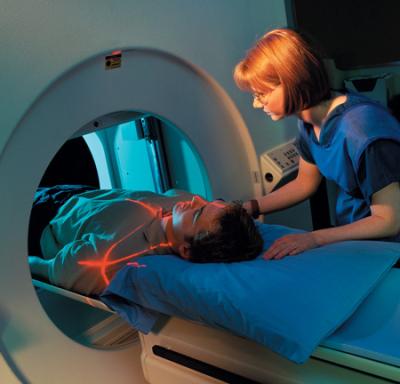
 Their findings are based on an analysis of 51 pleural mesothelioma patients from a Turkish hospital. All patients in the study were initially treated with chemotherapy, the standard first-line treatment for mesothelioma. But, when their mesothelioma tumors began to grow again several months later, some patients were treated with second-line chemotherapy (SLCT) while others had best supportive care (BSC), which includes symptom management only.
Their findings are based on an analysis of 51 pleural mesothelioma patients from a Turkish hospital. All patients in the study were initially treated with chemotherapy, the standard first-line treatment for mesothelioma. But, when their mesothelioma tumors began to grow again several months later, some patients were treated with second-line chemotherapy (SLCT) while others had best supportive care (BSC), which includes symptom management only.





